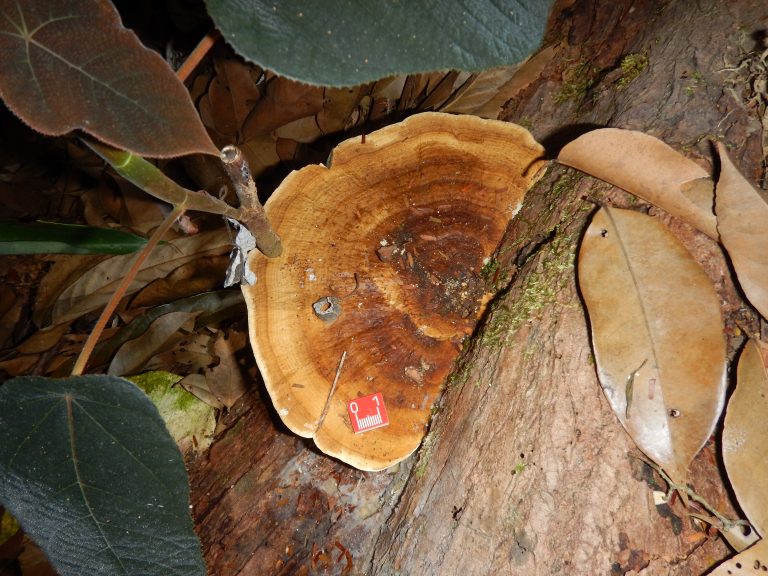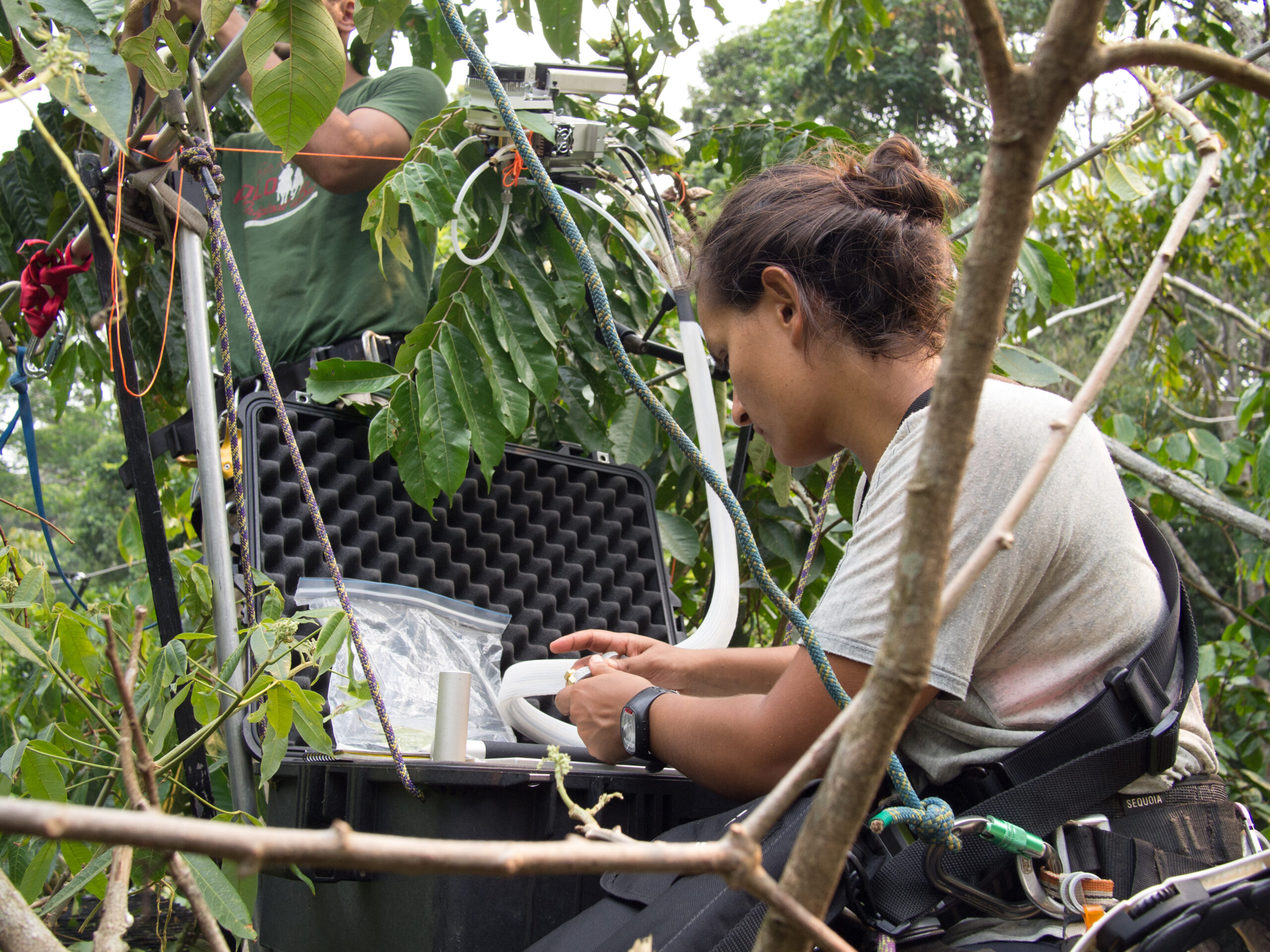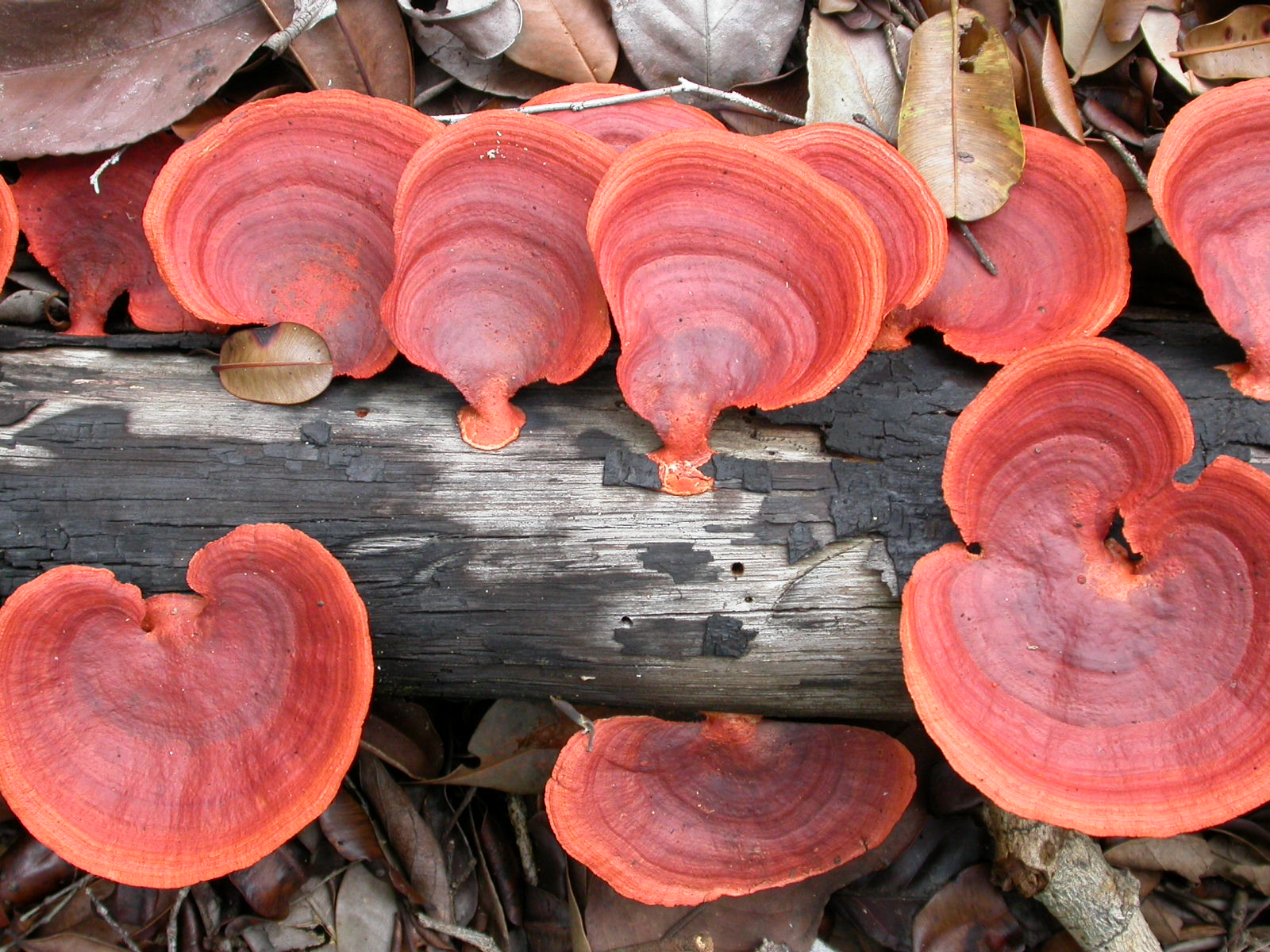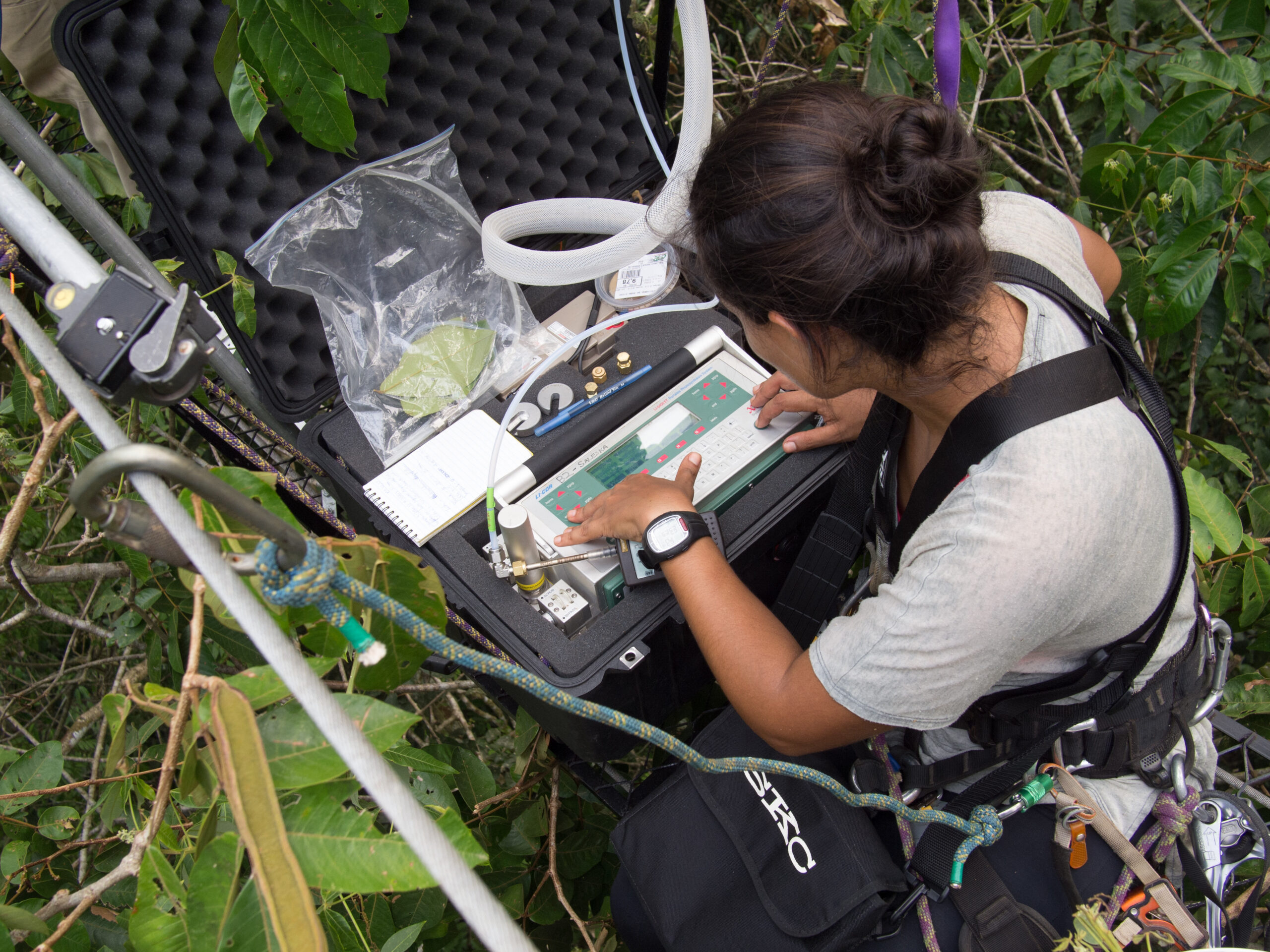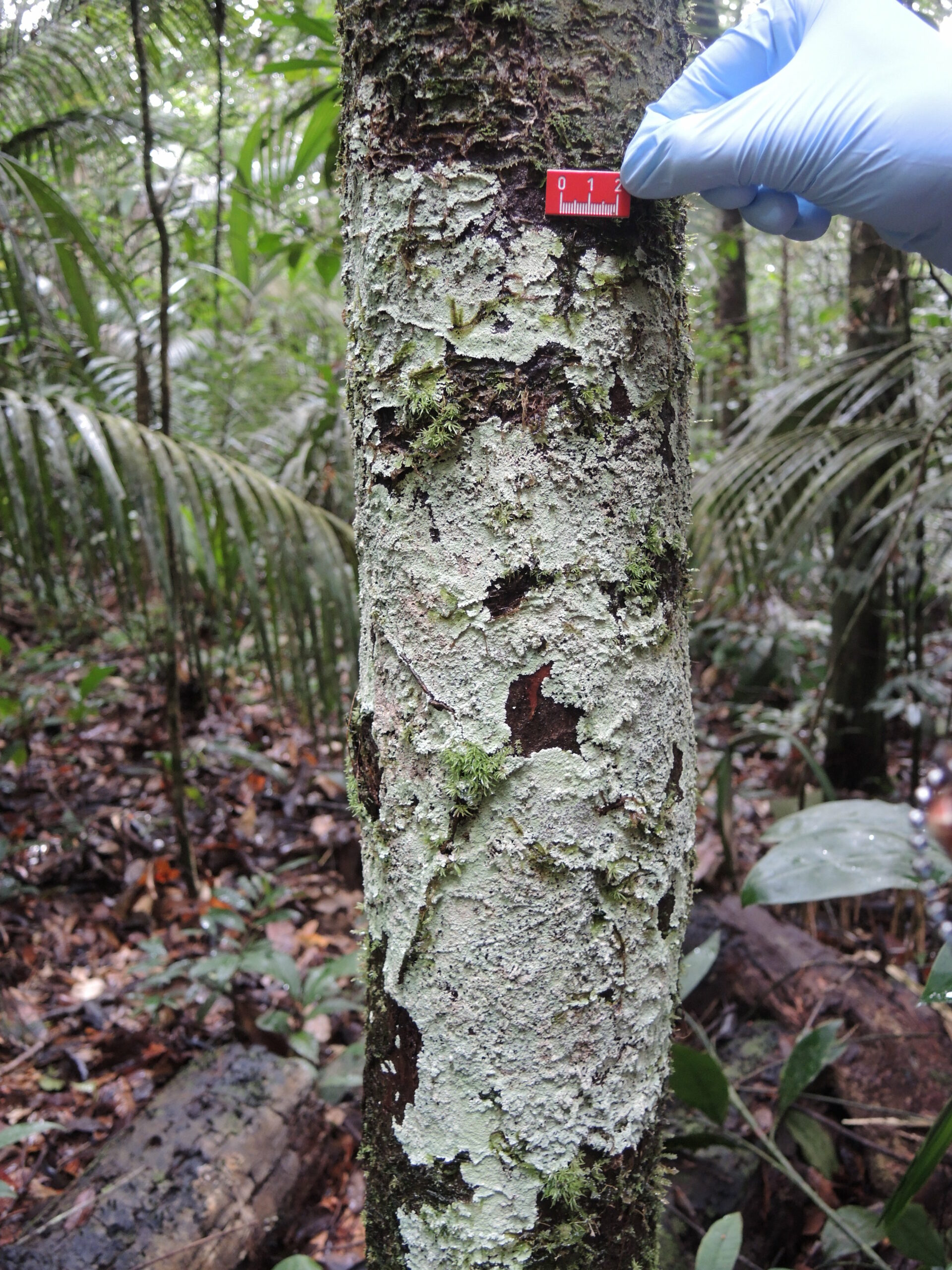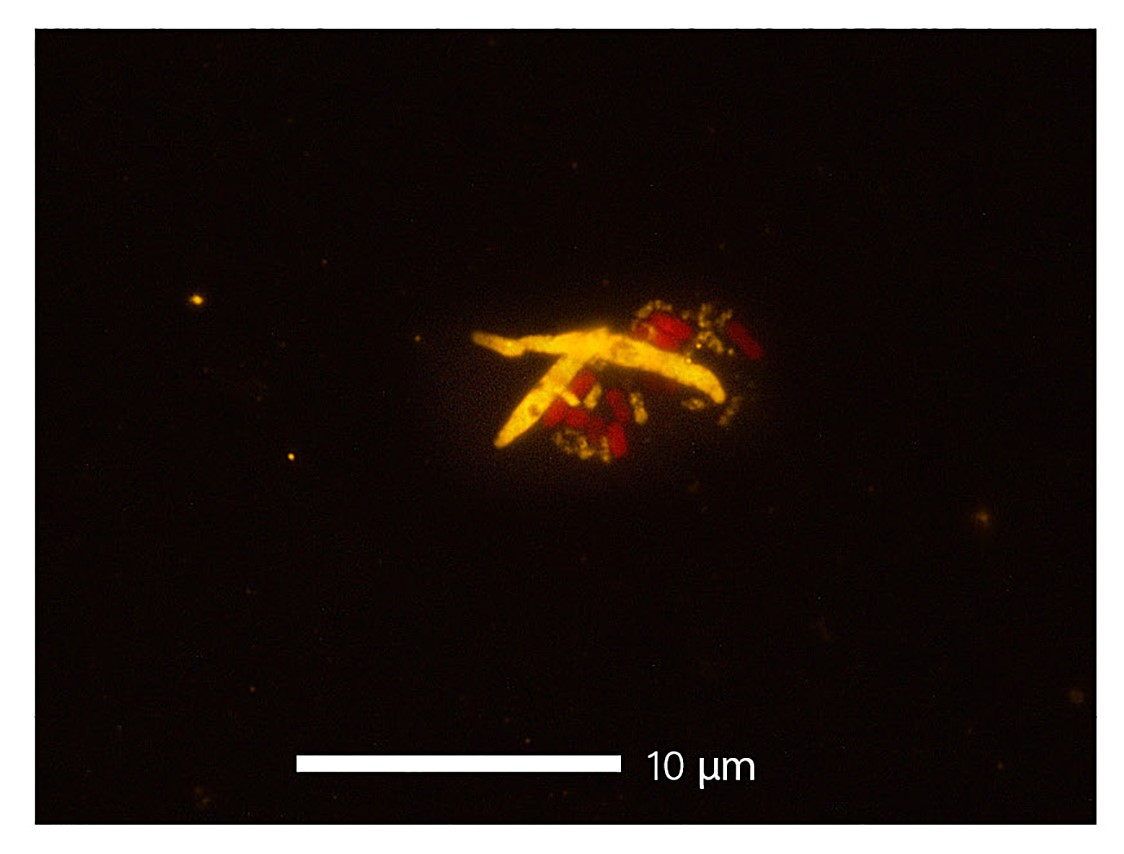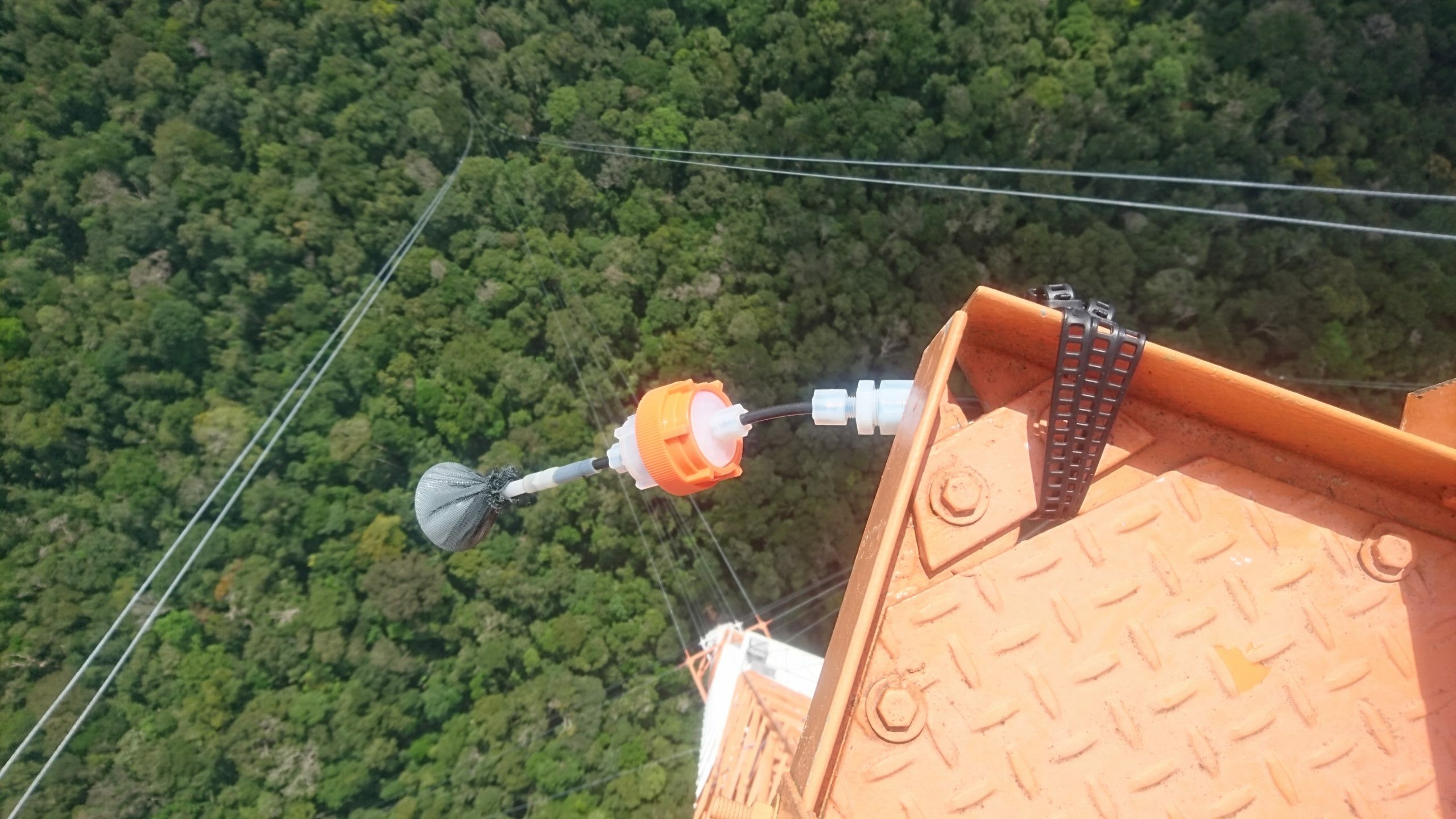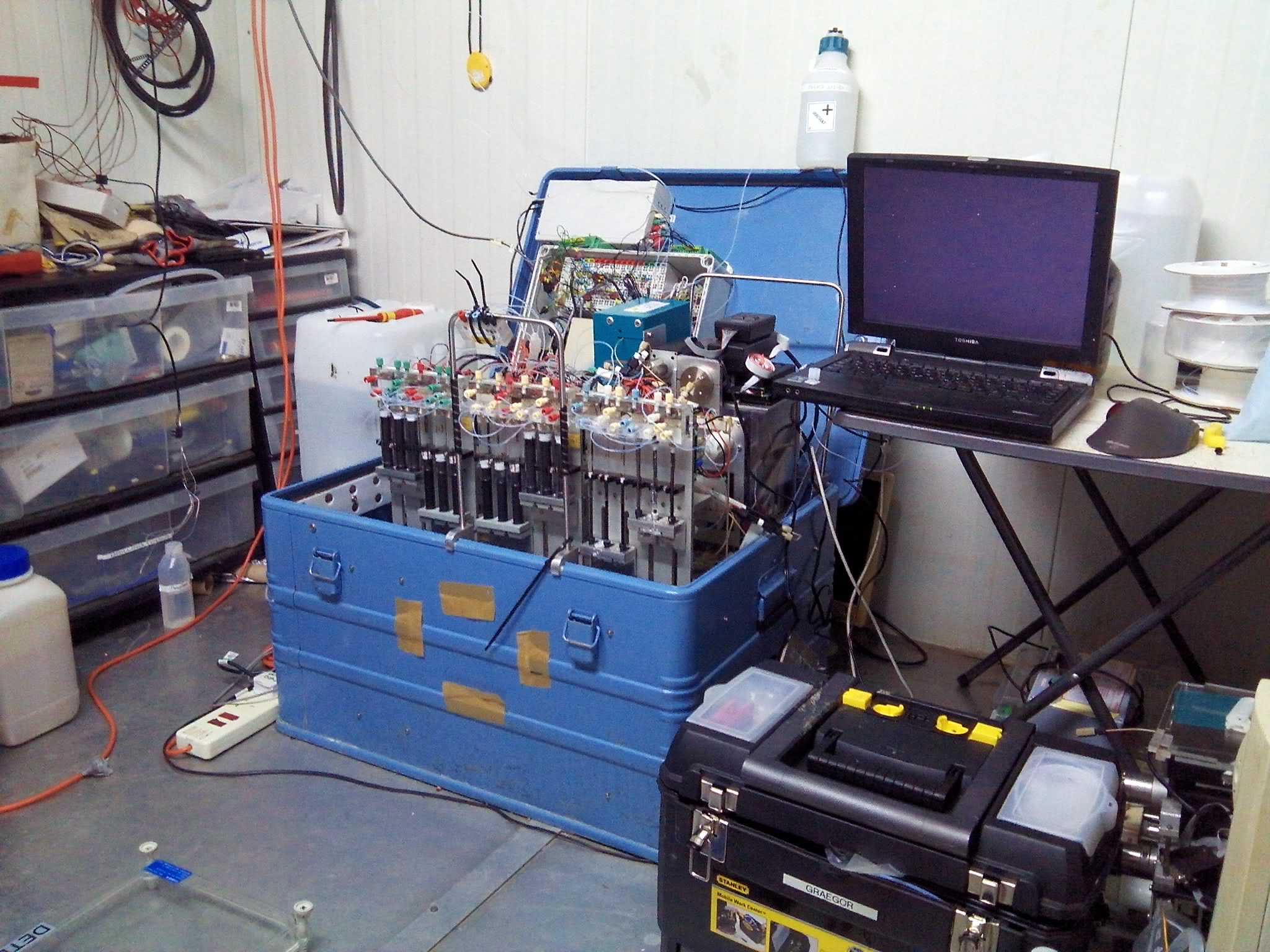Fungal spore emissions are an important contributor to biogenic aerosols, but we have yet to understand under what conditions fungi release their spores. Nina Löbs and co-authors developed a new technique to measure emissions from single organisms and tested this out at ATTO and with controlled lab experiments. They published their results in the Open Access Journal Atmospheric Measurement Techniques.
Aerosols play an important role in various atmospheric processes, and in particular in cloud formation. Therefore it is important to know how they are produced. In the middle of the Amazon rainforest, far away from any human pollutants, most aerosols are biogenic. Among the larger size fractions, fungal spores are dominating. But what are the favorable conditions for fungi to release their spores? That’s exactly what Nina Löbs and her co-authors wanted to find out!
To approach this complex question, they set up an exciting, new measurement technique that allows measuring fungal spore emissions of single organisms. So far, most bioaerosol measurement techniques only measured atmospheric concentrations of all aerosols in the atmosphere. This, however, does not allow distinguishing between different source organisms or communities. With their new set-up at hand, they went to ATTO. Here, they could measure the spore release in the forest near the site under natural conditions. In addition, they set up laboratory experiments. This allowed them to compare the field measurements with others conducted under controlled conditions. That is important, because in nature several environmental conditions, such as temperature and humidity, might change at the same time. In a controlled lab experiment, it is possible to change just one of these at a time and keep the other factor constant. For their study, they now just focused on one species to illustrate the measurement techniques and results.
For this species, they found that the fungi release their spores mainly under high air humidity conditions, in the range of 62% to 96%. This makes sense, because water condensation is essential for the release of fungal spores. Temperature and light seem to only play a minor role. Nevertheless, the field measurements showed a strong diurnal cycle – the fungi released most spores at nighttime.
This is study is a first important step to decipher the relevance of spore-producing organisms such as fungi for atmospheric aerosols and their effects on regional weather and climate. Based on that, they want to investigate a variety of different fungal species. And they also want to measure spore concentrations at different canopy height levels and during different seasons. Such further studies will help to complete the picture.
The study called “Aerosol measurement methods to quantify spore emissions from fungi and cryptogamic covers in the Amazon” was published Open Access by Löbs et al. (2020) in Atmos. Meas. Tech. ,13.
Similar articles
Direct measurements of OH radicals are rare and difficult to achieve. However, since they react with BVOCs, Ringsdorf et al. inferred them from isoprene measurements at ATTO. To do so, they applied a technique called ‘Dynamical Time Warping’ from the field of speech recognition. Akima Ringsdorf et al. published the study “Inferring the diurnal variability of OH radical concentrations over the Amazon from BVOC measurements” Open Access in Nature Scientific Reports.
Eliane Gomes Alves and her colleagues measured isoprene emissions at the ATTO 80-meter tower across three years to better understand how these emissions vary seasonally and under extreme climatic conditions like El Niño events. They also looked into which biological and environmental factors regulate the emission of isoprene to the atmosphere.
Bioaerosols influence the dynamics of the biosphere underneath. In a new study, Sylvia Mota de Oliveira and her colleagues used the ATTO site to collect air samples at 300 m above the forest. Then, they used DNA sequencing to analyze the biological components that were present and figure out what species of plant or fungi they belong to. One of the most striking new insights is the stark contrast between the species composition in the near-pristine Amazonian atmosphere compared to urban areas.
BVOC emissions in the Amazon have been studied for decades, but we still don’t fully understand when and under what conditions tree species or even individual trees emit more or fewer isoprenoids. To address this, Eliane Gomes Alves and her colleagues measured isoprenoid emission capacities of three Amazonian hyperdominant tree species.
Mosses and lichen appear to play a previously overlooked but important role in the atmospheric chemistry of tropical rainforests. A new study from Achim Edtbauer and colleagues shows that such cryptogams emit highly reactive and particle-forming compounds (BVOCs) that are important for air quality, climate, and ecosystem processes.
The Amazon rain forest plays a major role in global hydrological cycling. Biogenic aerosols, such as pollen, fungi, and spores likely influence the formation of clouds and precipitation. However, there are many different types of bioaerosols. The particles vary considerably in size, morphology, mixing state, as well as behavior like hygroscopicity (how much particles attract water) and metabolic activity. Therefore, it is likely that not only the amount of bioaerosols affects the hydrological cycle, but also the types of aerosols present.
Biogenic volatile organic compounds remove OH from the atmosphere through chemical reactions, which affects processes such as cloud formation. In a new study, Pfannerstill et al. reveal the important contributions of previously not-considered BVOCs species and underestimated OVOCs to the total OH reactivity.
Ramsay et al. measured inorganic trace gases such as ammonia and nitric acid and aerosols in the dry season at ATTO. They are to serve as baseline values for their concentration and fluxes in the atmosphere and are a first step in deciphering exchange processes of inorganic trace gases between the Amazon rainforest and the atmosphere.
A new study by Löbs et al. in Biogeosciences documents the microclimatic conditions for tropical mosses as a baseline for studies on their overall relevance on biogeochemical cycling. They found that water and light are overall the most important requirements for them to become photosynthetically active. However, their habitat determines which of the two plays the bigger role.
Nora Zannoni and her colleagues measured BVOC emissions at the ATTO tall tower in several heights. Specifically, they looked at one particular BVOC called α-pinene. They found that chiral BOVs at ATTO are neither equally abundant nor is the ratio of the two forms constant over time, season, or height. Surprisingly, they also discovered that termites might be a previously unknown source for BVOCs.


